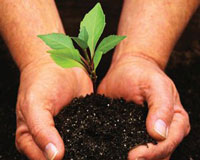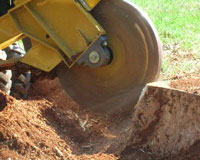Fireblight is a bacterial disease spread from tree to tree during blossom season by pollinating insects, birds, and raindrops. Fireblight infects apple trees, ornamental crabapple trees, pear trees, mountain ash, cotoneasters, and other various ornamental trees.
Symptoms
Symptoms of fireblight are die-back of infected branches from the outer tip inward. The leaves appear to have wilted and dried on the branch and remain attached (leaves and fruit appear to be scorched by fire for fireblight). The twigs and branches will be discolored, blackened, and dying. Symptoms start to appear shortly after petal fall and continue until mid summer. Fireblight bacteria will over winter (hibernate) in infected twigs and branches.
Curative
After diagnosing fireblight, the infected twigs and branches must be pruned out of the tree. Infected branches need to be pruned approximately six inches into the uninfected part of the branch. Pruning is the only solution for trees bearing edible fruit. Ornamental trees should be pruned after diagnosed with fireblight in the summer and injected with bacticide in the fall or early spring by a professional arborist. A quality fertilizing program is recommended for ornamental trees in late fall or early spring to increase the health and vigor of the tree.
Prevention
On edible fruit bearing trees, two to four sprays with streptomycin done every five to seven days during pre-blossom and blossom are required to prevent infection of the tree. Timing of application is most critical.
Ornamental trees require a preventative injection early spring before or at pre-blossom. A fall injection with a bacticide works very well for prevention of fireblight the following spring.
Always select fireblight resistant varieties when purchasing plant species susceptible to fireblight.


